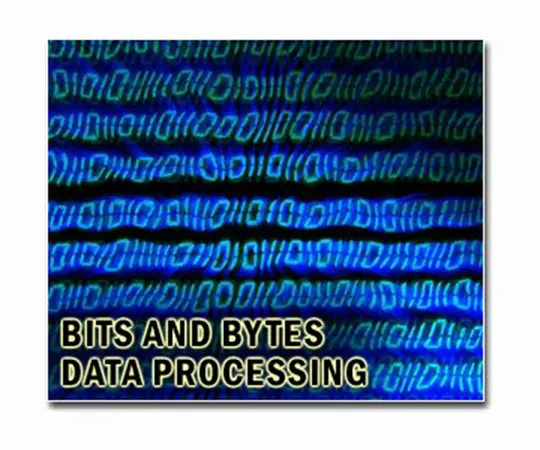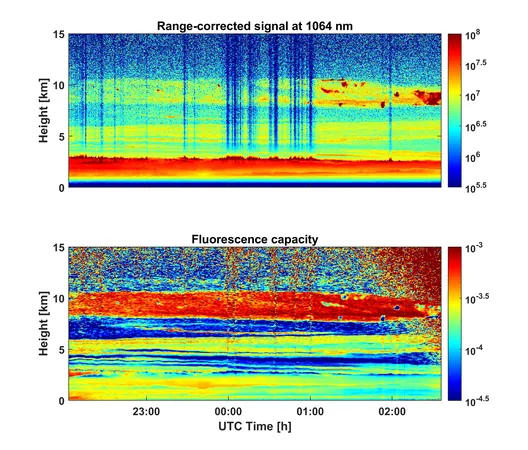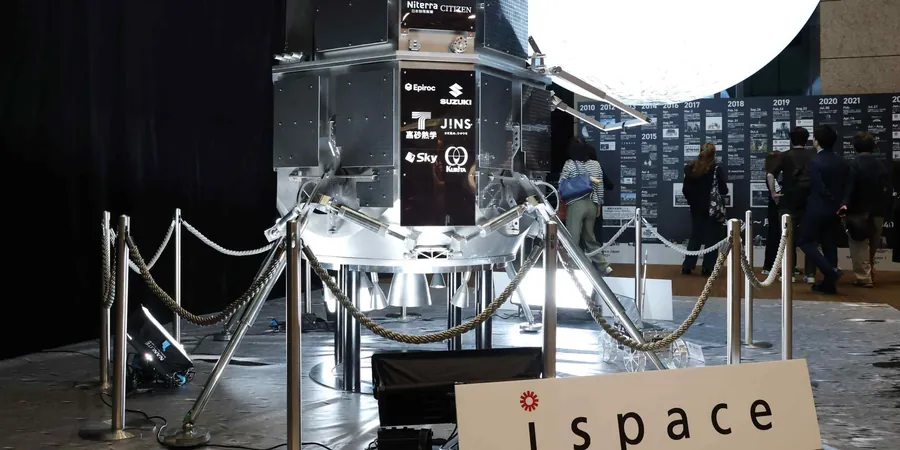
Unveiling the Universe's Secrets: The Bold Quest into Dark Matter and Energy
2025-01-24
Author: Siti
Exploring the Cosmos with Cutting-Edge Technology
In an exciting new chapter for astrophysics, researchers at the U.S. Department of Energy's Argonne National Laboratory are on a mission to demystify the universe. Using the powerful Aurora supercomputer, they are conducting extensive cosmological simulations that aim to shed light on the enigmatic phenomena of dark matter and dark energy—two areas with the potential to revolutionize our understanding of the cosmos. As the groundbreaking research unfolds, it offers a glimpse into questions that have perplexed scientists for decades. "The nature of dark matter and dark energy remains one of the biggest mysteries in modern science," states Salman Habib, an Argonne Distinguished Fellow and head of the lab's Computational Science division. "Although we are confident in their existence, we are still unraveling their fundamental characteristics and the principles that govern them."
The Dark Sky Mining Initiative
At the heart of this scientific endeavor is the Dark Sky Mining initiative, part of the Aurora Early Science Program supported by the Argonne Leadership Computing Facility (ALCF). By developing detailed sky maps that blend real astronomical observations with high-powered computer simulations, researchers are stepping into uncharted territory to uncover the truths surrounding dark energy and dark matter. Aurora, an exascale supercomputer with the capability to perform over a quintillion calculations per second, is pivotal to this undertaking. Utilizing advanced artificial intelligence (AI) and statistical methods, scientists are gaining groundbreaking insights into the interactions between dark matter, dark energy, and the distribution of galaxies within our universe.
The Cosmic Puzzle: Dark Matter and Dark Energy
For centuries, humanity's understanding of the universe has been revolutionized by groundbreaking discoveries, from Galileo’s telescope to NASA's James Webb Space Telescope. As science began to decipher cosmic structures, the existence of dark matter and dark energy emerged as significant challenges to existing cosmological models. To put it into perspective, visible matter makes up a mere 5% of the universe, while dark matter accounts for 27%, and dark energy dominates at 68%. The idea of dark matter first took root in the 1930s with Swiss astronomer Fritz Zwicky's observations of galaxy clusters, leading him to propose the existence of unseen mass to explain their gravitational binding. Subsequent research in the latter half of the 20th century, alongside modern techniques like gravitational lensing, has confirmed the presence of dark matter. Additionally, observations of distant supernovae revealed that the universe is not just expanding but accelerating, a phenomenon attributed to dark energy. As Habib explains, "Dark energy is fundamentally crucial in maintaining the integrity of our cosmological model, affecting the large-scale clustering of galaxies."
Harnessing Computational Power for Discovery
The Aurora supercomputer allows researchers to create virtual universes—detailed digital representations of the cosmos—enabling them to simulate cosmic events, test theories, and identify discrepancies between predictions and observations. By tweaking parameters in these models, scientists can adapt their understanding of how dark matter behaves. "If you give me a model for how dark matter might interact, I can run simulations based on that and see how mass distributions evolve," says Habib. This iterative approach not only helps refine existing theories but also paves the way for new revelations. Moreover, Aurora's implementation of AI revolutionizes research efficiency. Using machine learning strategies like emulation, the system minimizes the need for exhaustive simulations by honing in on the most relevant parameter sets that align with observations. This means researchers can vastly accelerate their investigative processes.
The Importance of Understanding Cosmic Expansion
Measuring the subtle effects of dark energy involves scrutinizing the universe's expansion rate and the velocities of galaxies. Creating large-scale sky maps allows scientists to visualize these forces and further refine their models in light of real-world data. This ongoing process, driven by Aurora's computational prowess, provides an efficient platform to explore a multitude of cosmic possibilities.
Future Prospects: Beyond Dark Matter and Energy
The implications of Aurora's immense computational capabilities extend far beyond current projects. As astronomers explore dark matter and dark energy, they are also paving the way for cutting-edge telescopes and probes. The research may even help elucidate the mass and properties of neutrinos—tiny and elusive particles that hold the key to several unanswered questions in particle physics. Reflecting on this journey of discovery, Habib emphasizes the profound connection between humanity and the cosmos. "What we are doing now is a continuation of our age-old journey to connect with the stars. The ability to peer deep into the universe reveals not just its secrets but also our own place within it," he asserts. This revolutionary research, driven by ingenuity, tech, and passion for knowledge, showcases humanity's never-ending quest to understand the universe—an endeavor that, undoubtedly, will remain a front-page story of our scientific narrative for generations to come.




 Brasil (PT)
Brasil (PT)
 Canada (EN)
Canada (EN)
 Chile (ES)
Chile (ES)
 Česko (CS)
Česko (CS)
 대한민국 (KO)
대한민국 (KO)
 España (ES)
España (ES)
 France (FR)
France (FR)
 Hong Kong (EN)
Hong Kong (EN)
 Italia (IT)
Italia (IT)
 日本 (JA)
日本 (JA)
 Magyarország (HU)
Magyarország (HU)
 Norge (NO)
Norge (NO)
 Polska (PL)
Polska (PL)
 Schweiz (DE)
Schweiz (DE)
 Singapore (EN)
Singapore (EN)
 Sverige (SV)
Sverige (SV)
 Suomi (FI)
Suomi (FI)
 Türkiye (TR)
Türkiye (TR)
 الإمارات العربية المتحدة (AR)
الإمارات العربية المتحدة (AR)